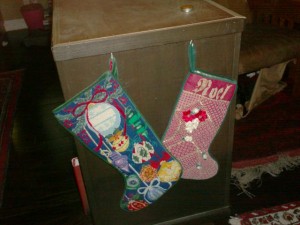
My mom, an artist, tended to avoid submitting her work to shows where she would be judged. To my mind this was weird — I thought she was great! But she compared herself with other artists and thought she fell short.
Now that I’m older and make lots of things, I can see what she means. I do send my work to judged shows and fairs and I’ve had mixed luck.
My Unscientific Analysis of Shows
In the world of exhibits there are two big categories; judged and non-judged. In a non-judged show any piece that is submitted with the paid fee is put on display. This can mean that the standards are low. It can also mean that the exhibit is bigger because more people will submit. These can be great places to show off your work.
All judged shows have categories for entries and, usually, have qualifications and classes for entry. There might be classifications for age, professional experience, residence, or even history of the piece. For example, as a Californian I can’t exhibit in a different state’s fair. Also as someone who has needlepoint as a profession I can’t enter as a non-professional. These categories and what they constitute is explained in the exhibit’s handbook. Entering incorrectly can disqualify you for both prizes and evaluation.
Judged shows can have needlework judges or not. Both EGA and ANG have qualification programs for judges and those folks will be the best for evaluating your work. Not all exhibits or fairs will have them. Unless the exhibitor tells you in advance you may not know. Unqualified judges may not be able to recognize serious flaws in the piece and may judge on subject matter instead of objectively. You won’t know this without exhibiting and I would still exhibit, because of the benefits to those who will see your work.
Creating a Great Piece
I’m not a judge so I can only make a few comments on this.
- Keep your work free of technical flaws. The more competitive the show the more critical this is. Make your stitches consistent, don’t skip stitches, make sure your work is straight.
- Your finishing, including framing, should enhance the work, not distract from it. If it is too distracting, that is considered a flaw.
- Don’t display worn items unless it is in a vintage category. Pilling makes your stitching look bad, no matter how good it is.)
If you want to get more insight into what makes a great piece, go to the ANG site and look at their galleries of past exhibits. One of the judges writes the commentary for each show. Not only will you see great pieces, but you’ll learn lots to improve your work.
The Benefits of Exhibiting
Depending on the kind of art you do, exhibiting can be very beneficial to your career. There are quilt designers who got their start because of a great original quilt they exhibited. I know several needlework teachers who have popular classes that started because they exhibited a piece they had made for themselves.
But, to me, the biggest benefit of exhibiting is what it gives the viewers. Whenever art or craft is on display and the public can see it, their view of the world opens up a bit. They can start to think of needlework as art. They can become entranced with this idea of stitching Christmas stockings or making a baby quilt.
If they are artists, they might incorporate ideas from what you display into their own work, creating a conversation between you and them, even if you don’t know it.
I’ve gone to art exhibits all my life and there isn’t one, even ones I hated, where I did not find something to inspire my work. To me that’s an essential part of exhibiting anywhere you can. Even at your county fair where the judges may not be qualified, you’ll find that the pieces you display have an effect on people. One year a piece of mine made the front page of the paper. So many people I knew called to congratulate me and some even tried needlepoint because of it.
The Benefits for You
Putting your work out for criticism and judgement requires, I think, lots of courage. You will often get very good suggestions and criticism. These can greatly improve your stitching.
About Janet M Perry
Janet Perry is the Internet's leading authority on needlepoint. She designs, teaches and writes, getting raves from her fans for her innovative techniques, extensive knowledge and generous teaching style. A leading writer of stitch guides, she blogs here and lives on an island in the northeast corner of the SF Bay with her family

Leave a Reply